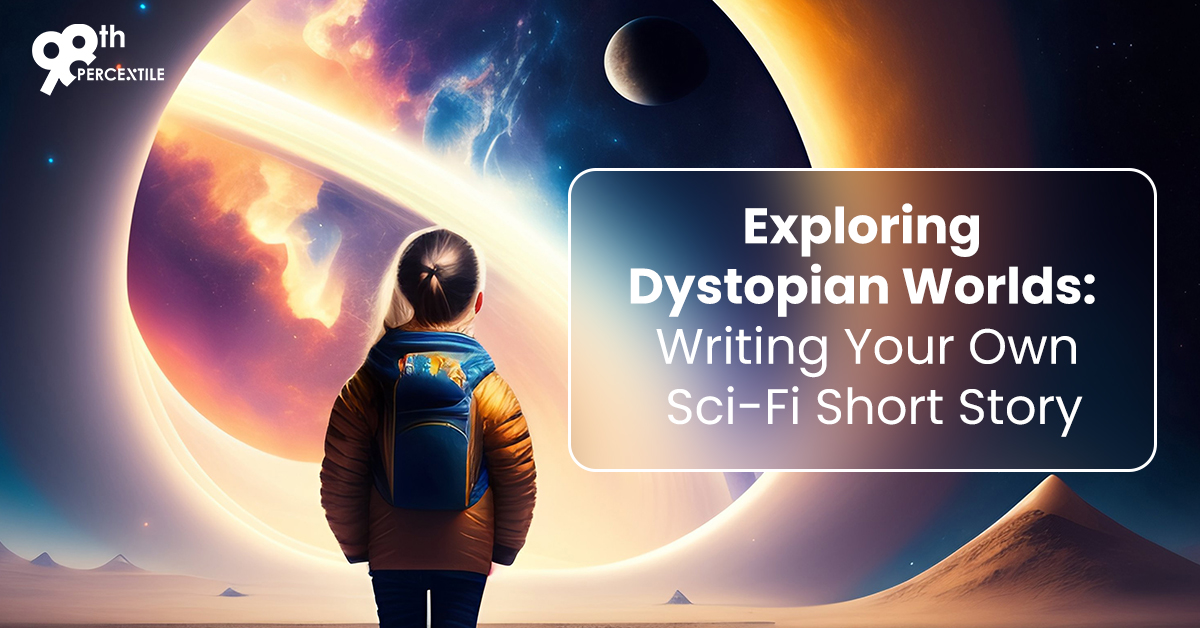Introduction: Dystopian fiction has captivated readers and viewers for generations, offering a glimpse into nightmarish futures and societies on the brink of collapse. This genre serves as a reflection of our own fears, concerns, and the consequences of unchecked human behavior. In this guide, we will delve into the dystopian genre, explore its key characteristics and significance, and provide a step-by-step guide for students to craft their own dystopian short stories.

Understanding the Dystopian Genre
Definition of Dystopian Fiction: Dystopian fiction presents a future society that is deeply flawed, oppressive, and often characterized by chaos, authoritarianism, or a loss of fundamental human values.
- Characteristics of Dystopian Worlds: a. Totalitarian Government: A powerful, controlling government that restricts personal freedom and enforces conformity. b. Societal Disintegration: A breakdown in social order, leading to unrest, violence, or inequality. c. Environmental Degradation: The world is often damaged by environmental disasters or human actions. d. Surveillance and Control: Extensive monitoring and control over citizens' lives. e. Loss of Individualism: A society where individuality is suppressed for the greater good. f. Rebellion or Resistance: Often, there is a protagonist or group fighting against the dystopian regime.
- Significance of Dystopian Fiction: a. Social Commentary: Dystopian stories reflect on contemporary issues and serve as cautionary tales. b. Exploration of Human Nature: They examine how individuals react to adversity and power. c. Imagination and Creativity: Dystopian worlds offer writers endless opportunities for world-building and creativity.
- II. Crafting Your Own Dystopian Short Story
- Conceptualization: a. Brainstorming: Think about the type of dystopian world you want to create and its underlying message or theme. b. World-Building: Develop the setting, government, technology, and rules of your dystopian world. c. Themes: Identify the social, political, or moral issues you want to explore in your story.
- Creating Compelling Characters: a. Protagonist: Design a relatable and dynamic protagonist who challenges the dystopian regime. b. Antagonist: Craft a compelling antagonist or oppressive force that opposes the protagonist. c. Supporting Characters: Populate your world with well-rounded characters who contribute to the narrative.
- Plot Development: a. Introduction: Set the stage, introduce the protagonist, and establish the dystopian world's key elements. b. Conflict: Create obstacles, dilemmas, and challenges that drive the plot forward. c. Rising Action: Develop tension, conflicts, and character development. d. Climax: The pivotal moment where the protagonist confronts the dystopian regime. e. Resolution: Conclude the story, addressing the central conflict and its consequences.
- Writing Style and Tone: a. Tone: Choose a tone that fits your narrative – dark, hopeful, or somewhere in between. b. Imagery: Use vivid descriptions to immerse readers in your dystopian world. c. Symbolism: Employ symbols and motifs to reinforce your story's themes.
- Editing and Revision: a. Revise for Clarity: Ensure your story is coherent and easy to follow. b. Proofread: Eliminate grammar and spelling errors. c. Seek Feedback: Share your story with peers or mentors for constructive criticism.
- Finalizing Your Dystopian Short Story: a. Title: Choose a compelling and relevant title for your story. b. Formatting: Format your story according to submission guidelines if applicable. c. Submission: Share your work with classmates, and teachers, or consider submitting to contests or publications.
Conclusion: Writing a dystopian short story can be an exciting and thought-provoking creative exercise. Through careful planning and attention to detail, students can craft compelling narratives that explore the dark aspects of society while offering insights into human nature and the consequences of our actions. Embrace the opportunity to immerse yourself in a dystopian world of your own creation and share your unique perspective with the world.
Let us have a look at some of the popular Dystopian stories! "The Lottery" by Shirley Jackson: In this unsettling short story, a seemingly idyllic small town holds an annual lottery with a shocking and gruesome outcome. It explores themes of blind conformity and the dark side of tradition. "Harrison Bergeron" by Kurt Vonnegut: Set in a future where everyone is forced to be equal through government-imposed handicaps, this story satirizes the concept of forced equality and the limitations it imposes on individuality. "The Machine Stops" by E.M. Forster: Written in 1909, this story remarkably predicts a dystopian future where people live underground, isolated in their individual cells, and rely entirely on a vast, omnipotent machine. It explores themes of technology and isolation. "The Minority Report" by Philip K. Dick: In a world where crimes can be predicted and prevented by precognitive beings, the story follows a man accused of a future murder he has not yet committed. It delves into issues of free will and predestination. "The Giver" by Lois Lowry: Although technically a novella rather than a short story, "The Giver" is a widely read dystopian work. It portrays a seemingly perfect society where emotions and memories are controlled, and individuality is suppressed.
Related Articles:
1) The Evolution of English: Contributions of European Languages
2) 5 Tips to Keep Your Kids Interested in Reading
3) 6 Steps for Teaching ELL Students Vocabulary Words
4) Key Shifts in English Language Arts

 Students/Staff
Students/Staff Parents
Parents ElevatEd
ElevatEd


-Nov-18-2025-03-57-47-3267-AM.png?width=360&length=360&name=401x226%20(6)-Nov-18-2025-03-57-47-3267-AM.png)



-Jul-22-2025-03-16-52-8797-AM.png?width=360&length=360&name=401x226%20(6)-Jul-22-2025-03-16-52-8797-AM.png)






